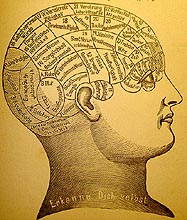What Is Phrenology?
Answer:

In the late eighteenth century, an Austrian physicist, Franz Joseph Gall, introduced an exciting new science, explaining the human mind and behavior. According to Gall, the shape of an individual's skull could identify his moral and intellectual qualities. Named phrenology by his pupil Spurzheim, it was believed that a skilled phrenologist could appraise the moral and intellectual qualities of an individual by inspection of the skull, palpating its surface for characteristic bumps or protuberances and depressions.
By the mid-nineteenth century, every major American city had its Phrenology Institute. Illnesses were diagnosed by head-feelers, and companies had potential employees "read" by a phrenologist before they were taken on. Feeling each others' bumps was a jolly way to spend a rainy evening, and even Queen Victoria had her children's heads "read." Even though its fundamental basis was discredited long before, phrenology continued to be practiced until the 1930s, by which time Americans could even have their head bumps read by an automatic electrical phrenology machine which printed out a report on ticker-tape.
In a tongue-in-the-cheek manner, Kevin Kelm recently introduced a technique of "Phrenotherapy." The idea of this "bold new discipline," as its inventor describes it, is to improve people's personalities by rearranging their headbumps — with a mallet!
Although it is viewed as a pseudoscience today, phrenology had a large following in the nineteenth century. People accepted this scientific pretender because it seemed to explain why man acts the way he does without making him morally responsible.
|